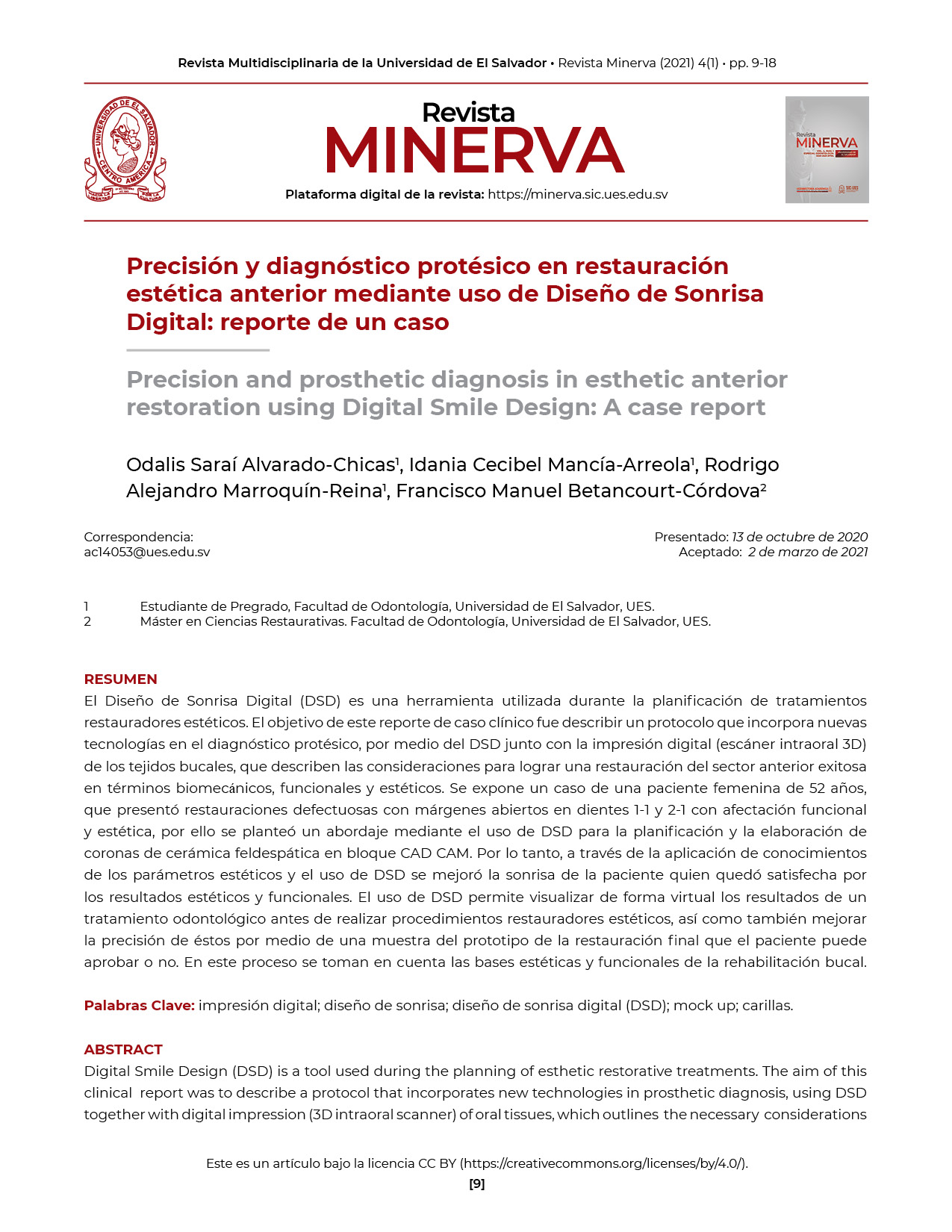Abstract
Digital Smile Design (DSD) is a tool used during the planning of esthetic restorative treatments. The aim of this clinical case report was to describe a protocol that incorporates new technologies in prosthetic diagnosis, using DSD together with digital impression (3D intraoral scanner) of oral tissues, describing the considerations to achieve a successful anterior sector restoration in biomechanical, functional and esthetic terms. A case of a 52-year-old female patient is presented, who had defective restorations with open margins in teeth 1-1 and 2-1, with functional and esthetic involvement, thus an approach was proposed by the use of DSD for planning and fabrication of feldespathic ceramic crowns in CAD CAM block. Therefore, through the application of knowledge of esthetic parameters and the use of DSD it was able to improve the patient's smile, satisfying her esthetic and functional needs. The use of DSD allows virtual visualization of the results of a dental treatment before performing esthetic restorative procedures, as well as improving their precision by showing a sample of the prototype of the final restoration that the patient can approve or not, considering the esthetic and functional bases of oral rehabilitation.

This work is licensed under a Creative Commons Attribution 4.0 International License.
Copyright (c) 2021 Authors who publish in Revista Minerva agree to the following terms: Authors continue as owners of their work, assigning only dissemination rights to Minerva Magazine under the standards of the Creative Commons Attribution 4.0 International License (CC BY 4.0). This license allows others to mix, adapt and build upon the work for any purpose, including commercially, and although new works must also acknowledge the initial author, they do not have to license derivative works under the same terms.




